Intro
Ever since I got my hands on the old Grado SR60i over a decade ago I have been on a journey to find the best Mid-Fi headphone in the under $400 range. I have tried and owned many of the top recommendations in the segment in that time. The DT 880 Pro has been on my wish list for years. Finally, I was able to get a pair off a fellow head-fier in almost new condition for $180 USD. Here in Canada it's hard to find under $250 USD. As of now I feel this is the last one I needed to try in my journey to find my favorite Mid-Fi headphone. I will be comparing this with the following in my collection:
I have published reviews for each of these headphones. Checkout my other reviews if you are interested in knowing more about any of them. Beyerdynamic is one of the few manufacturers I truly respect in the headphone industry. As a happy DT 770 Pro owner I do have a soft spot for Beyerdynamic. Credited for inventing the very first headphone, they know their stuff and it shows. Nearly all models are Made In Germany, which says a lot in year 2016. Although the DT 880 was introduced in the early 80's, it's remained relatively unchanged since. Originally there was just the Pro (250 Ohm) version. Now there are a few "Premium" versions at various impedances (32,250,600). I decided on the original DT 880 Pro (250 Ohm) version for the following reasons:
My Setup
In testing I used the TEAC UD-H01 32bit DAC connected via USB to my Windows 7 desktop. Then line out from the TEAC with RCA (full 2.0V RMS) to my Schiit Valhalla amp. Although this is a tube amp, it's one of the most neutral and low distortion out there. Unlike other tube amps the Valhalla does not add much, if any warmth in the mid-range. Compared to my SMSL SAP III solid state the Valhalla is more resolving with a bit more treble extension, fuller bass, and wider soundstage. Despite the SMSL being flatter, I find the Valhalla an overall improvement in almost every area. So I decided to write my impressions in this review with the Valhalla.
I use the foobar2000 player with EQ off playing various files from FLAC to m4a to mp3 (VBR/CBR 320). In terms of sound signature preferences I like more mid centric headphones with tight, accurate bass (quality over quantity). I frequently have long listening sessions and I do get irritated by sibilance on certain bright headphones like the DT 990. This is because I have quite sensitive hearing. I listen at much lower levels than anyone else I know. In terms of musical tastes, I enjoy all genres of music spanning across many different era's. But I have a soft spot for singer/songwriters with gifted vocals.
PS: I acquired the DT 990 Premium and Schiit Valhalla used from a local friend two weeks after my DT 880's came. I will be publishing reviews on those in the coming weeks.
Design/Build (10/10)
The packaging is modest, just a cardboard box. Included in the box is the headphone itself, 6.5mm screw on adapter, and a nylon soft carrying case. The DT 880 Pro feels substantial in the hand at 295 grams. They look and feel more expensive than they are. The headband itself is made of solid steel and is much thicker than average. I have yet to hear of anyone managing to break the headband on these. The DT 990 Premium headband feels flimsy in comparison. The generous padding on the headband can be removed and replaced or cleaned easily by undoing the button clips, another feature not available on the DT 990. Doing so will reveal the cable running along it to each driver.
The adjustable portion is held together securely with two large screws on each end. The adjustment does "click" into place with markings to easily get a visual confirmation that both sides are set the same. The markings are engraved, no paint to rub off over time and easy to use in the dark. Left/Right are clearly marked on the outside, with Braille markings for the blind. Above this is the engraved Beyerdynamic name with logo appearing on both sides. On the inside you will see "Made In Germany" engraved and on both sides.
The drivers are suspended by another steel portion that is securely fastened to the ear cups with screws. This is the steel portion that "clicks" up and down for adjustment. The available adjustment is large and should fit just about anyone from children to adults. I found the right fit at 4 "clicks" up the adjustment. The ear cups do not rotate to sit flap on a table, but they do tilt up and down.
The ear cups are made of high quality plastic with aluminum accents and a stainless steel grill on the exterior. The grill itself has a nicely polished finish which feels soft to the touch. The grill is anything but flimsy, it would take a lot of force to bend or dent them. Much higher quality than the grills on the HD 600. I like the fact they are stainless steel also, no paint to chip or rub off over time. The model "DT 880 Pro" is painted on the outside of the grills though. The metal grills on the 880 make them look and feel more premium than the DT770/990. The bladed grills on the DT 990 Premium are actually plastic. The HD 600 still has a slight edge in styling with the larger oval see through metal grills and granite like finish.
Moving onto the ear pads, I was surprised to find the velour material on the DT 880 is not the same as the 770. It looks identical but the 880's are more "plush" to the touch, even more so than the more expensive HD 600. I suspect Beyerdynamic uses a higher thread count on the velour for the 880/990 pads than the 770 ones. It appears the 770 pads offer more isolation at the cost of comfort. The foam padding however is identical in its firmness. In terms of removing/installing the ear pads, the procedure is the same. Simply pull them off to reveal a foam covering the drivers.
All DT series headphones are exceptionally well made. But of all three models and variants the DT 880 Pro feels and looks the most "premium". You'll be challenged to find a better made headphone in ANY price range. The design is remarkably simple and easy to service. It's clearly designed to be a headphone for the working professional. The DT 880 beats out every other Mid-Fi headphone I've tried or owned in terms of build quality, hands down. I swear the design team had the German Tiger tanks in mind when they made this. I give it 10/10.
Comfort (9/10)
Let's face it, Beyerdynamic makes the best velour ear pads on the market. They are large enough to fit nice and cozy inside. When your ears do touch, it's like snuggling up with your favorite teddy bear. I wish they made underwear like this! Padding is great, even with the firm clamping force out of box, the ear pads did a great job of eliminating pressure. I do wear glasses and can experience pressure on the top of the ears sometimes, but this was never an issue with the DT 880. Because the ear cups are semi-open, they never became sweaty or even warm inside. They truly provide all-day comfort, on par with the DT 990.
I did find when the coiled cable is stretched it will pull on the headphones. The simple solution was to stretch it out and tie it to something to get some slack. Another easy solution is to use a headphone extension cord, which doubles as a security measure to avoid damaging the cable in case of a snag. Overall I would still give a slight edge to the HD 600 in comfort because pressure is more evenly distributed on the larger oval ear cups, and they are more breathable. I give it a 9/10, knocking it for the firm clamping force out of box.
Sound (9/10)
There is slight isolation from ambient noise, but it's quite minimal. It's not enough to use in a noisy environment. Sound leakage is not bad, much less than the HD 600, but more than the T50RP. You might be ok at lower volumes without bothering others. It really depends on the ambient noise in your environment. In terms of power requirements it's maybe 10% more than the HD 600. I go from 10 to 11 o'clock on the volume knob of my Valhalla. I've never seen anyone pass 1 o'clock when trying them out. You can achieve moderate listening levels at 75-85% volume on most portable devices. Desktops and laptops get loud enough at 60-70%. I would still consider amplification required to get the best out of them. Bass response, among other things, is greatly improved when properly amplified. In terms of burn-in I did not notice any change before or after 150+ hours. But keep in mind mine were used.
To summarize this headphones sound signature in a few words I would say it's like a sip of hot chocolate while sitting in front of a warm fire on a cold day. It's inviting, yet polite and comforting. It's a great balance of transparency and detail in the treble, with a more forward mid-range for added warmth. It's a more "Sennheiserized" sound signature than the DT770/990, which I found to be more aggressive (V-shaped). Beyerdynamic adds a touch of sparkle up top while keeping the mid-range luscious and intimate.
The immediate improvement over the HD 600 for me was the more spacious and engaging soundstage. I put it up there with the best of the fully open headphones I have tried like the AKG K612 Pro. It's on par with the T50RP MK3 in this regard. The DT 880 manages to retrieve great detail in the treble without being harsh or distracting, even with imperfect sources. The T50RP for me was a bit aggressive and a little too unforgiving in this regard, while the HD 600 was a bit of the opposite. The DT 880 manages to find a great middle ground. The treble is more extended and transparent then the HD 600. The treble never bleeds into the mids, which is very important to me because I'm a sucker for mids. Of all my headphones the DT 880 Pro has the most pleasing treble.
No question the king of the mid-range for me has always been the HD 600. This is really the only reason I keep coming back to it. Of all the headphones I have tried the DT 880 comes the closest to pleasing me to the same degree. Both present a forward mid-range that sounds equally natural and intimate. I spent many days trying to distinguish the slightest difference in the mid-range. In the lower mids to bass there is more "weight" in the HD 600. This adds a bit more depth to male vocals and lower tones. I still have to give the HD 600 a slight edge in the mid-range, but I feel this is overshadowed by the 880's superior treble extension and soundstage.
The bass that's there is good. It's well extended, tight, and controlled. I just wish there were a tad more of it. Although the amount of impact is less than the 770, it's quicker and more composed. Bass on the 990 Premium hits a little harder but is not as composed either. This is the area where the HD 600 makes up some ground. The HD 600 is just "weightier" and hits with more authority, particularly in the sub bass. Honestly though, all open headphones in this segment are lacking in bass to some degree. For bass lovers the T50RP trumps the HD 600 while offering a much better value. I think a headphone for listening pleasure probably needs to accentuate bass a little, especially for the younger folks. For mixing/monitoring applications you want as flat as possible. For that purpose the DT 880 and K612 are likely the best in this group. The K612 being the more neutral of the two, but the DT 880 being more transparent and rich. Bass is an easy fix with EQ or amplifiers which have a bass boost. You can't really fix lack of detail, soundstage, etc. So if I had to put up with something it would be in the area of bass response. And too little is better than too much. I found just 2-3DB of boost was just right for me. I give it a fantastic 9/10 for sound.
Verdict (9.5/10)
Here in Canada the HD 600 is hard to find under $400 USD. The DT 880 Pro is significantly less at about $250 USD. Having owned both now, I would have to recommend the DT 880 over the HD 600. I don't feel you would be missing out on anything. In fact, you're getting improvements in a lot of areas that matter. The Beyerdynamic is better made and more durable. It has a simpler easier to service design. It's just more practical and versatile. Some might be able to make a case that the HD 600 sounds better. Regardless, the price difference of about $100-150 is better spent on a DAC and/or AMP if you don't already have good ones. When you take the value proposition into account, the DT 880 Pro is the king of Mid-Fi. The only case I can make for the HD 600 is for bass heads, but chances are even that won't satisfy. Those people are better off going for something like the DT 770 or T50RP MK3 for half the price.
Value aside, if you had to pry one away from me now (880 or 600), I would have to let the DT 880 go. If you asked me the same question before I had the Schiit Valhalla I would of said the opposite. The Valhalla adds a touch of detail and richness to the treble that works magic on the HD 600. I suspect this amp would do wonders on any high impedance headphone with a "dark" or "veiled" sound signature like most Sennheisers. That being said, the DT 880 already has that magical sparkle in treble so if you own flat or dark amps the 880 is still the better choice, especially on a budget.
Comparison Notes
The headphones differ to a much greater degree in their design, materials, and craftsmanship than their audio fidelity. Those factors are much less subjective. Yet people read these reviews and put more weight on audio fidelity. I am comparing some of the best headphones in their respective class, which all sound great in their own right. Our comments as reviewers, especially with regards to audio fidelity, are completely subjective. Remember that your ears, and more importantly your setup, is unique. It's easy to build a bias by reading what other people have said before giving it a fair chance. Don't do it! If you like something because of its value, design or feature set, try it out yourself before forming an opinion on how it sounds. Don't be afraid to share an opinion that differs from everyone else. Truth wont prevail by being agreeable.
Anyway, below is how I ranked the headphones from best to worst (left to right) in each category. "+" indicates a tie.
Below is how well each headphone paired with the Schiit Valhalla.
The Valhalla powered all headphones without a hitch, I am just nitpicking here to rank them in hopes this will be informative. You may have noticed I moved the T50RP MK3 down in a few categories since I reviewed it. The treble is a little more irritable with the Valhalla in the mix, so take this into account. It's getting less and less head time because the HD 600 and DT 880 are my go to open cans. For my bass head moments I still prefer the DT 770 for its isolation and more agreeable treble. The DT 990's treble is even more irritable than the T50RP to my ears, so it gets the least head time.
I hope you found the review, however biased, helpful in making your own decision. If you did, please mark it helpful so others will see it. Happy listening!
Ever since I got my hands on the old Grado SR60i over a decade ago I have been on a journey to find the best Mid-Fi headphone in the under $400 range. I have tried and owned many of the top recommendations in the segment in that time. The DT 880 Pro has been on my wish list for years. Finally, I was able to get a pair off a fellow head-fier in almost new condition for $180 USD. Here in Canada it's hard to find under $250 USD. As of now I feel this is the last one I needed to try in my journey to find my favorite Mid-Fi headphone. I will be comparing this with the following in my collection:
- AKG K612 Pro
- Fostex T50RP MK3
- Beyerdynamic DT 770 Pro (250 Ohm)
- DT 990 Premium (250 Ohm)
- Sennheiser HD 600
I have published reviews for each of these headphones. Checkout my other reviews if you are interested in knowing more about any of them. Beyerdynamic is one of the few manufacturers I truly respect in the headphone industry. As a happy DT 770 Pro owner I do have a soft spot for Beyerdynamic. Credited for inventing the very first headphone, they know their stuff and it shows. Nearly all models are Made In Germany, which says a lot in year 2016. Although the DT 880 was introduced in the early 80's, it's remained relatively unchanged since. Originally there was just the Pro (250 Ohm) version. Now there are a few "Premium" versions at various impedances (32,250,600). I decided on the original DT 880 Pro (250 Ohm) version for the following reasons:
- It's easier to drive than the 600Ohm variants, and is virtually identical in audio fidelity.
- The head band padding is easily removable/replaceable on the Pro version.
- I find the clamping force too loose on the Premium version.
- The headband is thicker and higher quality steel on the Pro version.
- I don't like the appearance or feel of the sharp metal clip on the adjustment portion of the Premium version.
- Lastly, I prefer the coiled cable for its versatility and durability (snags are less likely to cause damage).
My Setup
In testing I used the TEAC UD-H01 32bit DAC connected via USB to my Windows 7 desktop. Then line out from the TEAC with RCA (full 2.0V RMS) to my Schiit Valhalla amp. Although this is a tube amp, it's one of the most neutral and low distortion out there. Unlike other tube amps the Valhalla does not add much, if any warmth in the mid-range. Compared to my SMSL SAP III solid state the Valhalla is more resolving with a bit more treble extension, fuller bass, and wider soundstage. Despite the SMSL being flatter, I find the Valhalla an overall improvement in almost every area. So I decided to write my impressions in this review with the Valhalla.
I use the foobar2000 player with EQ off playing various files from FLAC to m4a to mp3 (VBR/CBR 320). In terms of sound signature preferences I like more mid centric headphones with tight, accurate bass (quality over quantity). I frequently have long listening sessions and I do get irritated by sibilance on certain bright headphones like the DT 990. This is because I have quite sensitive hearing. I listen at much lower levels than anyone else I know. In terms of musical tastes, I enjoy all genres of music spanning across many different era's. But I have a soft spot for singer/songwriters with gifted vocals.
PS: I acquired the DT 990 Premium and Schiit Valhalla used from a local friend two weeks after my DT 880's came. I will be publishing reviews on those in the coming weeks.
Design/Build (10/10)
The packaging is modest, just a cardboard box. Included in the box is the headphone itself, 6.5mm screw on adapter, and a nylon soft carrying case. The DT 880 Pro feels substantial in the hand at 295 grams. They look and feel more expensive than they are. The headband itself is made of solid steel and is much thicker than average. I have yet to hear of anyone managing to break the headband on these. The DT 990 Premium headband feels flimsy in comparison. The generous padding on the headband can be removed and replaced or cleaned easily by undoing the button clips, another feature not available on the DT 990. Doing so will reveal the cable running along it to each driver.
(Did not get a shot of the 880 Pro headband, but it's identical to the 770 shown above.)
The adjustable portion is held together securely with two large screws on each end. The adjustment does "click" into place with markings to easily get a visual confirmation that both sides are set the same. The markings are engraved, no paint to rub off over time and easy to use in the dark. Left/Right are clearly marked on the outside, with Braille markings for the blind. Above this is the engraved Beyerdynamic name with logo appearing on both sides. On the inside you will see "Made In Germany" engraved and on both sides.
The drivers are suspended by another steel portion that is securely fastened to the ear cups with screws. This is the steel portion that "clicks" up and down for adjustment. The available adjustment is large and should fit just about anyone from children to adults. I found the right fit at 4 "clicks" up the adjustment. The ear cups do not rotate to sit flap on a table, but they do tilt up and down.
The ear cups are made of high quality plastic with aluminum accents and a stainless steel grill on the exterior. The grill itself has a nicely polished finish which feels soft to the touch. The grill is anything but flimsy, it would take a lot of force to bend or dent them. Much higher quality than the grills on the HD 600. I like the fact they are stainless steel also, no paint to chip or rub off over time. The model "DT 880 Pro" is painted on the outside of the grills though. The metal grills on the 880 make them look and feel more premium than the DT770/990. The bladed grills on the DT 990 Premium are actually plastic. The HD 600 still has a slight edge in styling with the larger oval see through metal grills and granite like finish.
Moving onto the ear pads, I was surprised to find the velour material on the DT 880 is not the same as the 770. It looks identical but the 880's are more "plush" to the touch, even more so than the more expensive HD 600. I suspect Beyerdynamic uses a higher thread count on the velour for the 880/990 pads than the 770 ones. It appears the 770 pads offer more isolation at the cost of comfort. The foam padding however is identical in its firmness. In terms of removing/installing the ear pads, the procedure is the same. Simply pull them off to reveal a foam covering the drivers.
(DT880 left, DT770 right on both images)
The rear of the pads look identical, but I noticed the velour material goes farther back on the 880 pad before the seam. Some people complained about discomfort from the stitching of the 770 rubbing on the ears. This is not a problem with the 880 since the stitching is closer to the rear of the ear pad. Plastic guides can be popped out to remove the foam covering the driver. Under that is a much thicker and denser black cotton material glued to the center to offer some dampening. Under that is a thin white cotton mesh, also glued on.
The coiled cable is permanently fixed to the left driver. I prefer single sided cables for one reason, it's another easy way to tell which side is which in the dark. The cable is about 5ft in length, up to 10ft when stretched out. It is terminated to 3.5mm with a screw on 6.5mm adapter included. The cable is not replaceable but it is securely fixed and durable. As an owner of other headphones with replaceable cables, I think the feature is overrated. Connectors not only wear out, but can sometimes affect sound when moving around or not securely fastened. I have yet to replace a cable on any headphone. If you need more length or you're afraid of damaging the cable, use a headphone extension cord. I really don't see a "need" for a replaceable cable. Unless you plan to go portable with this headphone, in which case there are much better options for that purpose. Every other part can be replaced on this headphone, including the drivers themselves. Finding parts is easy because of their long-standing popularity. This is a big plus for working professionals who are more likely to abuse their gear.All DT series headphones are exceptionally well made. But of all three models and variants the DT 880 Pro feels and looks the most "premium". You'll be challenged to find a better made headphone in ANY price range. The design is remarkably simple and easy to service. It's clearly designed to be a headphone for the working professional. The DT 880 beats out every other Mid-Fi headphone I've tried or owned in terms of build quality, hands down. I swear the design team had the German Tiger tanks in mind when they made this. I give it 10/10.
Comfort (9/10)
The clamping force is firm out of the box. Noticeably more than the HD 600 and DT 770 (10 years old now). The steel is very stiff, I would not worry about breaking it, just bend it to your will. After several weeks I did not find it to be a problem. But it will take some time before it loosens up to be like the DT 770, which is perfect for me right now. I prefer the Pro series headband because the Premium one on the DT 990 I found to be too loose. To the point where any quick movement of the head would throw them off. If you could prop the DT 880 on a headphone stand or something to stretch it out it wouldn't take long to get the clamping force just right. The padding is ample on the headband, and it contours perfectly to my head, no hot spots at all. Pressure on the top of the head is very well spread out, no spaces on the top of the head can be seen with them on. It's one of the best headbands I've used in terms of how well it contours.Let's face it, Beyerdynamic makes the best velour ear pads on the market. They are large enough to fit nice and cozy inside. When your ears do touch, it's like snuggling up with your favorite teddy bear. I wish they made underwear like this! Padding is great, even with the firm clamping force out of box, the ear pads did a great job of eliminating pressure. I do wear glasses and can experience pressure on the top of the ears sometimes, but this was never an issue with the DT 880. Because the ear cups are semi-open, they never became sweaty or even warm inside. They truly provide all-day comfort, on par with the DT 990.
I did find when the coiled cable is stretched it will pull on the headphones. The simple solution was to stretch it out and tie it to something to get some slack. Another easy solution is to use a headphone extension cord, which doubles as a security measure to avoid damaging the cable in case of a snag. Overall I would still give a slight edge to the HD 600 in comfort because pressure is more evenly distributed on the larger oval ear cups, and they are more breathable. I give it a 9/10, knocking it for the firm clamping force out of box.
Sound (9/10)
There is slight isolation from ambient noise, but it's quite minimal. It's not enough to use in a noisy environment. Sound leakage is not bad, much less than the HD 600, but more than the T50RP. You might be ok at lower volumes without bothering others. It really depends on the ambient noise in your environment. In terms of power requirements it's maybe 10% more than the HD 600. I go from 10 to 11 o'clock on the volume knob of my Valhalla. I've never seen anyone pass 1 o'clock when trying them out. You can achieve moderate listening levels at 75-85% volume on most portable devices. Desktops and laptops get loud enough at 60-70%. I would still consider amplification required to get the best out of them. Bass response, among other things, is greatly improved when properly amplified. In terms of burn-in I did not notice any change before or after 150+ hours. But keep in mind mine were used.
To summarize this headphones sound signature in a few words I would say it's like a sip of hot chocolate while sitting in front of a warm fire on a cold day. It's inviting, yet polite and comforting. It's a great balance of transparency and detail in the treble, with a more forward mid-range for added warmth. It's a more "Sennheiserized" sound signature than the DT770/990, which I found to be more aggressive (V-shaped). Beyerdynamic adds a touch of sparkle up top while keeping the mid-range luscious and intimate.
The immediate improvement over the HD 600 for me was the more spacious and engaging soundstage. I put it up there with the best of the fully open headphones I have tried like the AKG K612 Pro. It's on par with the T50RP MK3 in this regard. The DT 880 manages to retrieve great detail in the treble without being harsh or distracting, even with imperfect sources. The T50RP for me was a bit aggressive and a little too unforgiving in this regard, while the HD 600 was a bit of the opposite. The DT 880 manages to find a great middle ground. The treble is more extended and transparent then the HD 600. The treble never bleeds into the mids, which is very important to me because I'm a sucker for mids. Of all my headphones the DT 880 Pro has the most pleasing treble.
No question the king of the mid-range for me has always been the HD 600. This is really the only reason I keep coming back to it. Of all the headphones I have tried the DT 880 comes the closest to pleasing me to the same degree. Both present a forward mid-range that sounds equally natural and intimate. I spent many days trying to distinguish the slightest difference in the mid-range. In the lower mids to bass there is more "weight" in the HD 600. This adds a bit more depth to male vocals and lower tones. I still have to give the HD 600 a slight edge in the mid-range, but I feel this is overshadowed by the 880's superior treble extension and soundstage.
The bass that's there is good. It's well extended, tight, and controlled. I just wish there were a tad more of it. Although the amount of impact is less than the 770, it's quicker and more composed. Bass on the 990 Premium hits a little harder but is not as composed either. This is the area where the HD 600 makes up some ground. The HD 600 is just "weightier" and hits with more authority, particularly in the sub bass. Honestly though, all open headphones in this segment are lacking in bass to some degree. For bass lovers the T50RP trumps the HD 600 while offering a much better value. I think a headphone for listening pleasure probably needs to accentuate bass a little, especially for the younger folks. For mixing/monitoring applications you want as flat as possible. For that purpose the DT 880 and K612 are likely the best in this group. The K612 being the more neutral of the two, but the DT 880 being more transparent and rich. Bass is an easy fix with EQ or amplifiers which have a bass boost. You can't really fix lack of detail, soundstage, etc. So if I had to put up with something it would be in the area of bass response. And too little is better than too much. I found just 2-3DB of boost was just right for me. I give it a fantastic 9/10 for sound.
Verdict (9.5/10)
Here in Canada the HD 600 is hard to find under $400 USD. The DT 880 Pro is significantly less at about $250 USD. Having owned both now, I would have to recommend the DT 880 over the HD 600. I don't feel you would be missing out on anything. In fact, you're getting improvements in a lot of areas that matter. The Beyerdynamic is better made and more durable. It has a simpler easier to service design. It's just more practical and versatile. Some might be able to make a case that the HD 600 sounds better. Regardless, the price difference of about $100-150 is better spent on a DAC and/or AMP if you don't already have good ones. When you take the value proposition into account, the DT 880 Pro is the king of Mid-Fi. The only case I can make for the HD 600 is for bass heads, but chances are even that won't satisfy. Those people are better off going for something like the DT 770 or T50RP MK3 for half the price.
Value aside, if you had to pry one away from me now (880 or 600), I would have to let the DT 880 go. If you asked me the same question before I had the Schiit Valhalla I would of said the opposite. The Valhalla adds a touch of detail and richness to the treble that works magic on the HD 600. I suspect this amp would do wonders on any high impedance headphone with a "dark" or "veiled" sound signature like most Sennheisers. That being said, the DT 880 already has that magical sparkle in treble so if you own flat or dark amps the 880 is still the better choice, especially on a budget.
Comparison Notes
The headphones differ to a much greater degree in their design, materials, and craftsmanship than their audio fidelity. Those factors are much less subjective. Yet people read these reviews and put more weight on audio fidelity. I am comparing some of the best headphones in their respective class, which all sound great in their own right. Our comments as reviewers, especially with regards to audio fidelity, are completely subjective. Remember that your ears, and more importantly your setup, is unique. It's easy to build a bias by reading what other people have said before giving it a fair chance. Don't do it! If you like something because of its value, design or feature set, try it out yourself before forming an opinion on how it sounds. Don't be afraid to share an opinion that differs from everyone else. Truth wont prevail by being agreeable.
Anyway, below is how I ranked the headphones from best to worst (left to right) in each category. "+" indicates a tie.
- Mids/Vocals (HD600,DT880,K612,T50RP,DT770,DT990)
- Bass Response (T50RP,DT770,HD600,DT990,DT880,K612)
- Soundstage/Imaging (DT880+DT990,T50RP,K612,HD600,DT770)
- Highs (DT880,T50RP,DT990,K612,HD600,DT770)
- Transparency/Detail (DT880+DT990,T50RP,HD600,K612,DT770)
- Neutrality (K612,DT880,T50RP,HD600,DT770,DT990)
- Isolation (DT770,T50RP,DT880,DT990,K612,HD600)
- Comfort (HD600,DT880+DT990,K612,DT770,T50RP)
- Materials/Craftsmanship (DT880,DT770,DT990,T50RP,HD600,K612)
- Style (HD600,DT880,DT990,DT770,T50RP,K612)
- Value (K612,T50RP,DT770,DT880,DT990,HD600)
- Overall Audio Fidelity (DT880,HD600,T50RP,DT990,K612,DT770,)
- My Favorite (HD600,DT880,DT770,K612,T50RP,DT990)
Below is how well each headphone paired with the Schiit Valhalla.
- Valhalla Amp Pairing (HD600,DT880,K612,DT770,T50RP,DT990)
The Valhalla powered all headphones without a hitch, I am just nitpicking here to rank them in hopes this will be informative. You may have noticed I moved the T50RP MK3 down in a few categories since I reviewed it. The treble is a little more irritable with the Valhalla in the mix, so take this into account. It's getting less and less head time because the HD 600 and DT 880 are my go to open cans. For my bass head moments I still prefer the DT 770 for its isolation and more agreeable treble. The DT 990's treble is even more irritable than the T50RP to my ears, so it gets the least head time.
I hope you found the review, however biased, helpful in making your own decision. If you did, please mark it helpful so others will see it. Happy listening!




















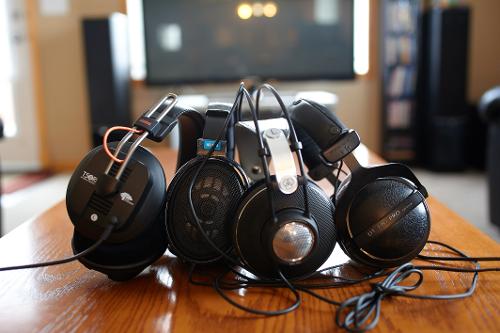
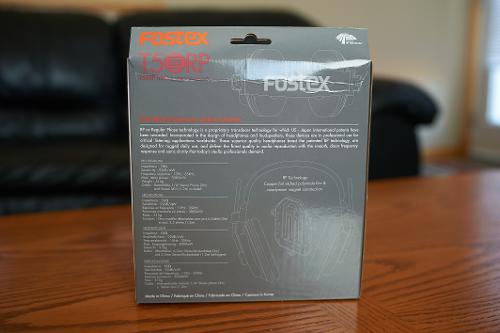



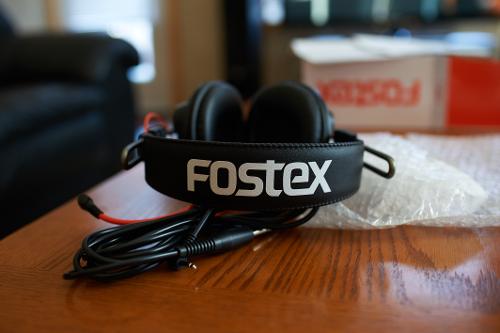

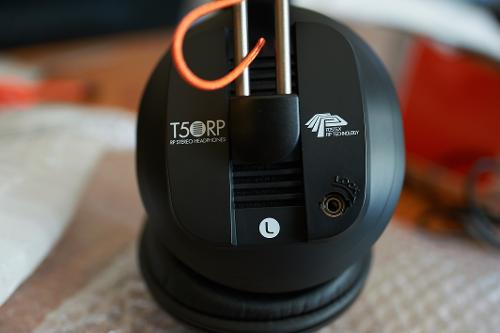



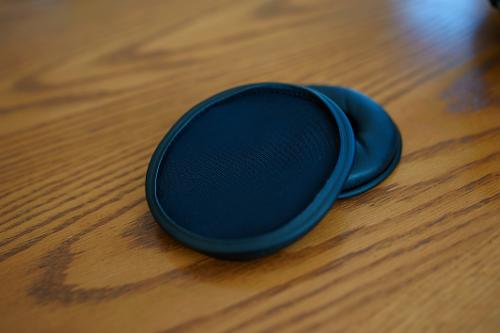

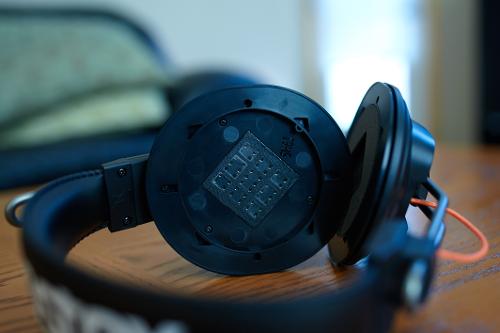

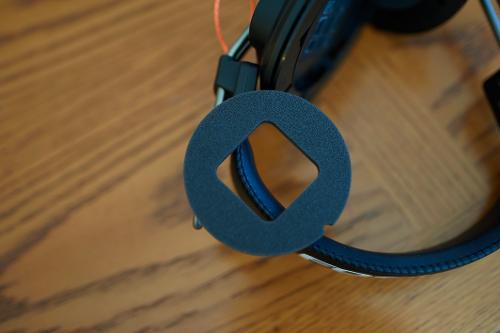

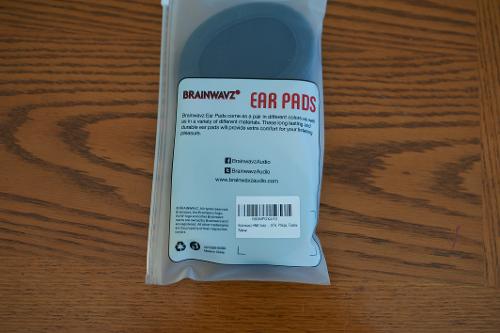


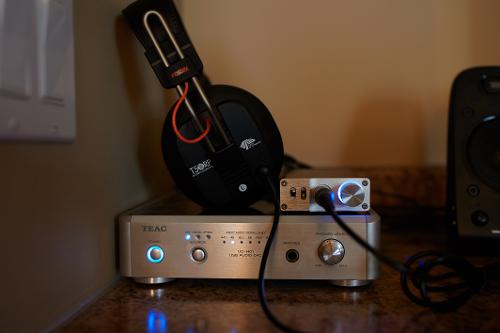

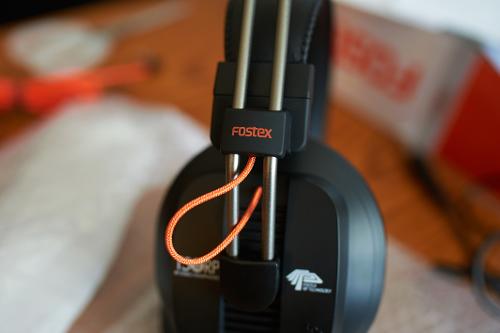

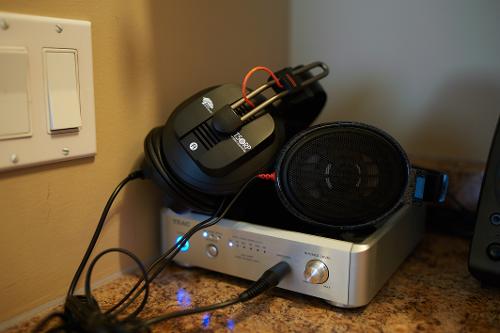































































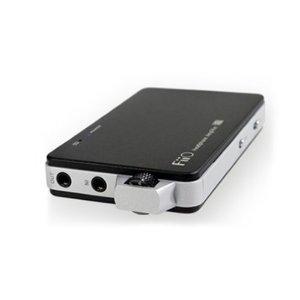










 .
.
